如何在室内或室外种植多肉植物
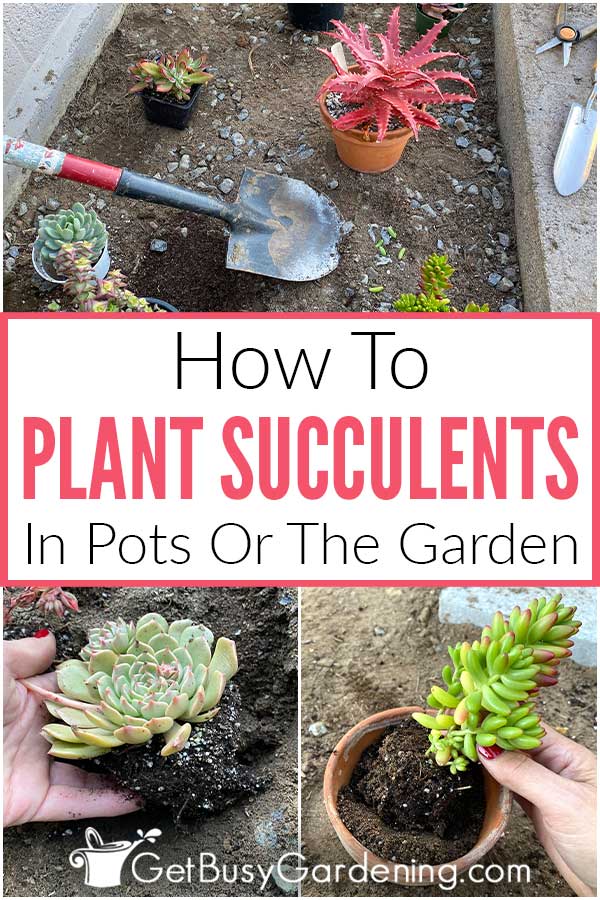
Table of contents

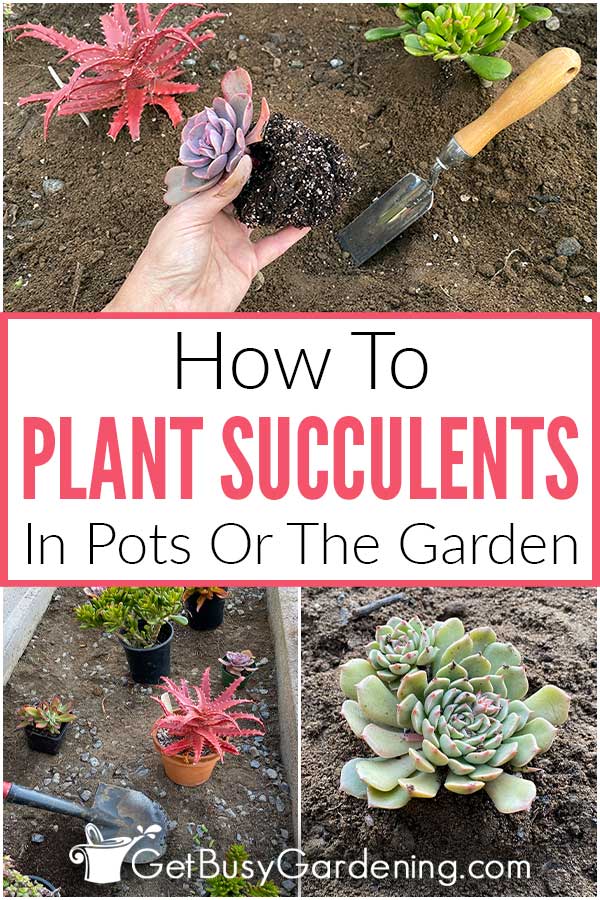
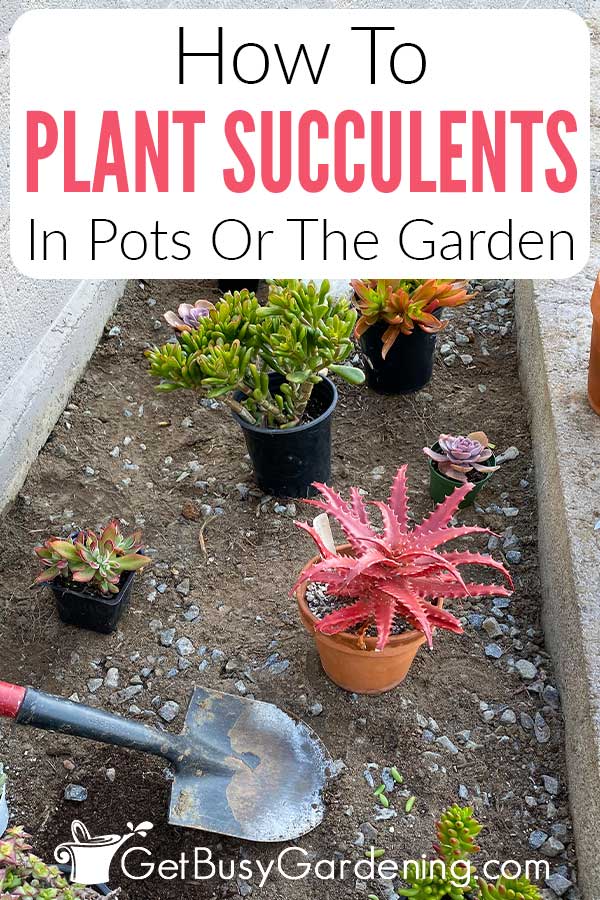
无论是在室内还是室外,正确种植多肉植物都很重要。 在本篇文章中,我将向您介绍种植多肉植物的具体时间和方法,以便取得最佳效果。
See_also: 如何种植绣球花:完全护理指南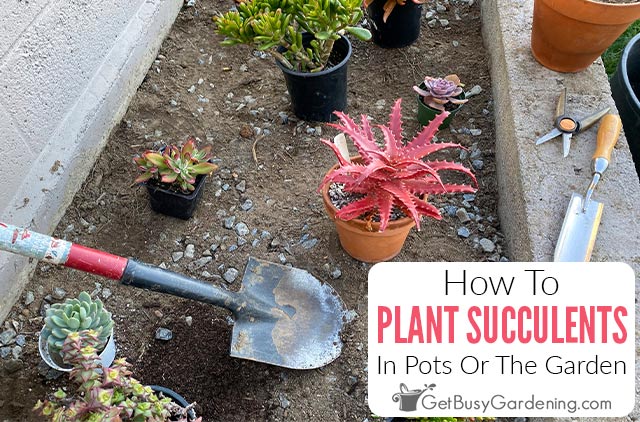

多肉植物非常容易种植和养护,但重要的是要知道何时以及如何种植才能让它们茁壮成长。
如果操作不当,或在错误的时间操作,它们就很难存活下来。
别担心,这并不难,我会带你详细了解一切。 一旦你掌握了种植多肉植物的窍门,它就会成为你的第二天性。
种植多肉植物的最佳时间是什么时候?
种植多肉植物的最佳时间取决于您的居住地和它们所处的位置。
在室外,最理想的时间是春季或秋季,避开最热的月份,尤其是如果您居住的地方气候极其炎热和干旱。
在室内,最好在春季或初夏种植,这样在寒冷季节到来之前,它们就有足够的时间成活。
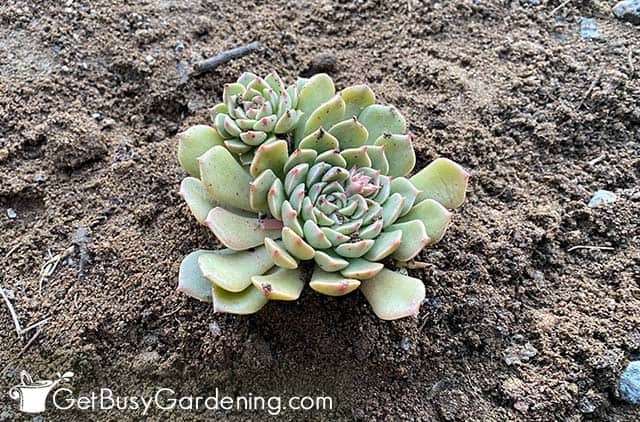 移植后的小多肉植物
移植后的小多肉植物 种植多肉植物的最佳方法是什么?
种植多肉植物的最佳方法是将其摆放在与根球顶部持平的位置,或者比洞或花盆的顶部低不超过 1/4 英寸。
它们的根很浅,所以不要给它们太多空间,否则它们很难扎根。
种植多肉植物的最佳环境是什么?
种植多肉植物最好选择排水性良好的地方或花盆。 如果想把它们放在容器里,那就选择底部有孔的容器。
在室外,要找排水性好的天然土壤,或者用珍珠岩和沙子改良土壤,使其更加疏松。
相关职位: 如何自制多肉土壤(附食谱)
 松开多肉植物根部的圆形图案
松开多肉植物根部的圆形图案 种植多肉植物需要多深?
种植多肉植物时,深度只能达到原来的深度,或者只够覆盖所有根部。
确保不要把它们放得太深,否则它们可能难以扎根,更容易腐烂。
在室外,挖一个只比根球稍宽、稍深的坑来松土。
如果您要把它们放进花盆里,那就选择只大一到两个尺寸的花盆,并以相同的深度埋葬它们。
相关职位: 如何给多肉植物浇水
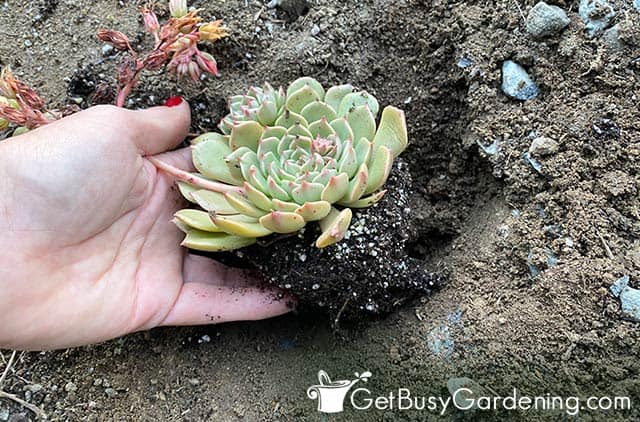 将多肉植物放入种植穴中
将多肉植物放入种植穴中 如何种植多肉植物
种植多肉植物的具体步骤因是在室内还是室外花园而异。 以下是两者的详细步骤。
此外,如果根部形成环状图案,可先将其打散,使其整齐。
在室内种植多肉植物
在室内种植多肉植物非常有趣,你可以设计出一些有趣可爱的菜园!
一定要使用有排水孔的容器。 对于单株植物,选择一个比根茎大几英寸的容器。
在底部填入新鲜、无菌、排水性快的盆栽土壤,或使用砂砾混合土。
将根球放入花盆中,然后在根球周围填土,直到完全覆盖根球,边填土边轻轻地将根球压实。
相关职位: 如何给多肉植物重新上盆
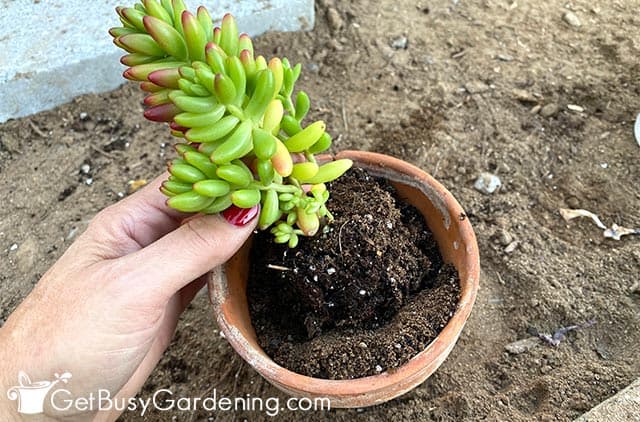 在花盆中种植多肉植物
在花盆中种植多肉植物 在室外种植多肉植物
如果花园土壤的排水性不是很好,可以用沙子或珍珠岩进行改良。
See_also: 用于扦插生根的廉价简易繁殖箱挖一个比根球宽几英寸、深几英寸的坑,然后把植物放在同样的深度。
在根部周围填土,直到完全覆盖为止,然后轻轻压实,去除气孔。
相关职位: 用茎插条或叶子繁殖多肉植物
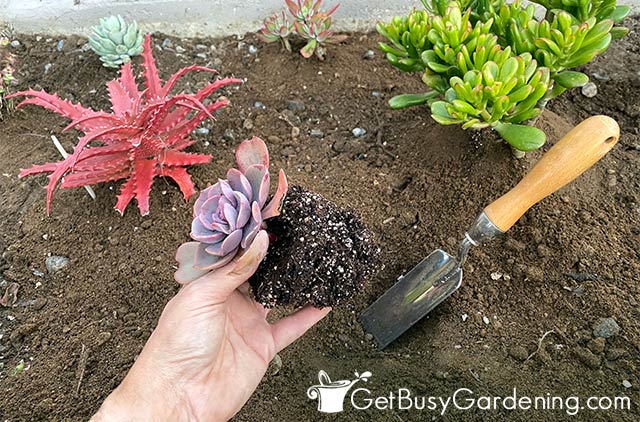 在花园里移植多肉植物
在花园里移植多肉植物 关于种植多肉植物的常见问题
下面我将回答一些关于种植多肉植物的常见问题。 如果您在这里找不到答案,请在评论中提问。
你可以只在岩石中种植多肉植物吗?
只在石头上种植多肉植物并不是一个好主意,虽然多肉植物需要排水性良好的混合物,但仅靠石头并不能保持足够的养分或水分来维持多肉植物的健康。
可以在普通土壤中种植多肉植物吗?
我不建议在普通土壤中种植多肉植物。 大多数类型的土壤都会积水过多。 一定要使用排水性好的混合土,或者用珍珠岩或沙子改良花园土壤。
您可以在秋天或冬天种植多肉植物吗?
如果气候炎热干燥,您可以在秋季或冬季种植多肉植物。 否则,最好在春季或凉爽的夏季种植。
可以在没有排水孔的花盆里种植多肉植物吗?
不,不要把多肉植物种在没有排水孔的花盆里,这样做非常危险,而且几乎总是会因为浇水过多而导致腐烂。
种植多肉植物并不难,无论是在室内还是室外,您都可以按照类似的步骤进行。 只要方法得当,您的多肉植物就能健康长寿!
更多花园护理文章
在下面的评论区分享您种植多肉植物的技巧。


可打印的步骤说明
如何逐步种植多肉植物

种植多肉植物非常简单,但正确操作非常重要。 请按照以下详细说明一步步操作,每次都能正确种植。
材料
- 盆栽土(如果使用花盆)
- 珍珠岩(可选)
- 沙子(可选)
工具
- 铲子或小铲子
- 花园手套
- 新容器(可选)
说明
- 选择地点 - 在花园里选一个排水性好的地方,或者用一个有排水孔的花盆。
- 准备土壤 - 使用排水性良好的混合土,或用珍珠岩和沙子改良厚重的园林土,使其更疏松。
- 准备洞或盆 - 挖一个只比根球稍大一点的洞,或者在容器底部加土。
- 定位根球 - 放置多肉植物,使根球顶部与新土壤线在同一水平线上。
- 填写 - 稳住植物,将土填入洞或盆中,边填边轻轻地将土包在根部周围。
说明
- 在种植多肉植物之前,一定要确保它们水分充足。
- 如果根系呈环状,则应在种植前将其松开并理顺。


